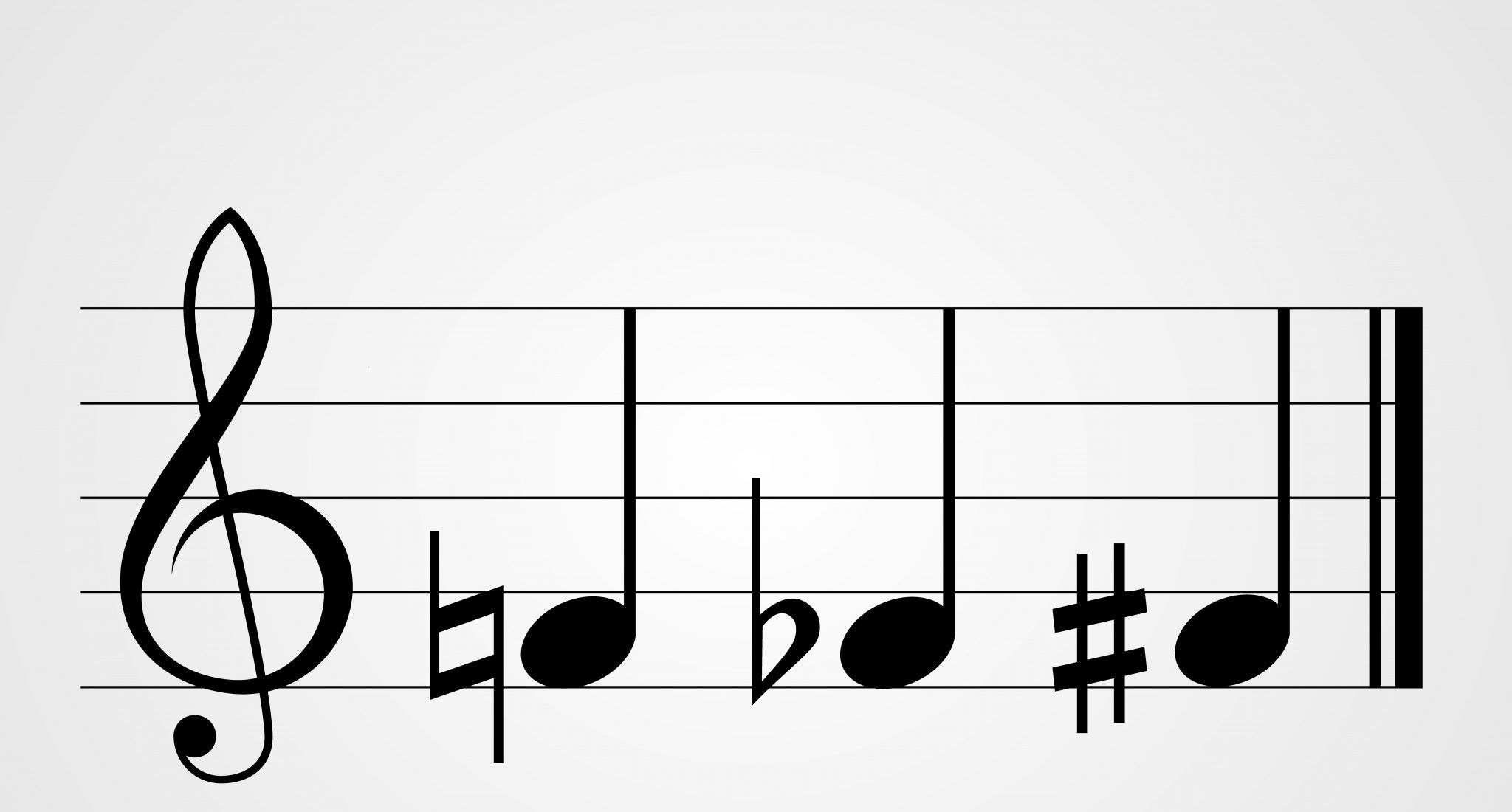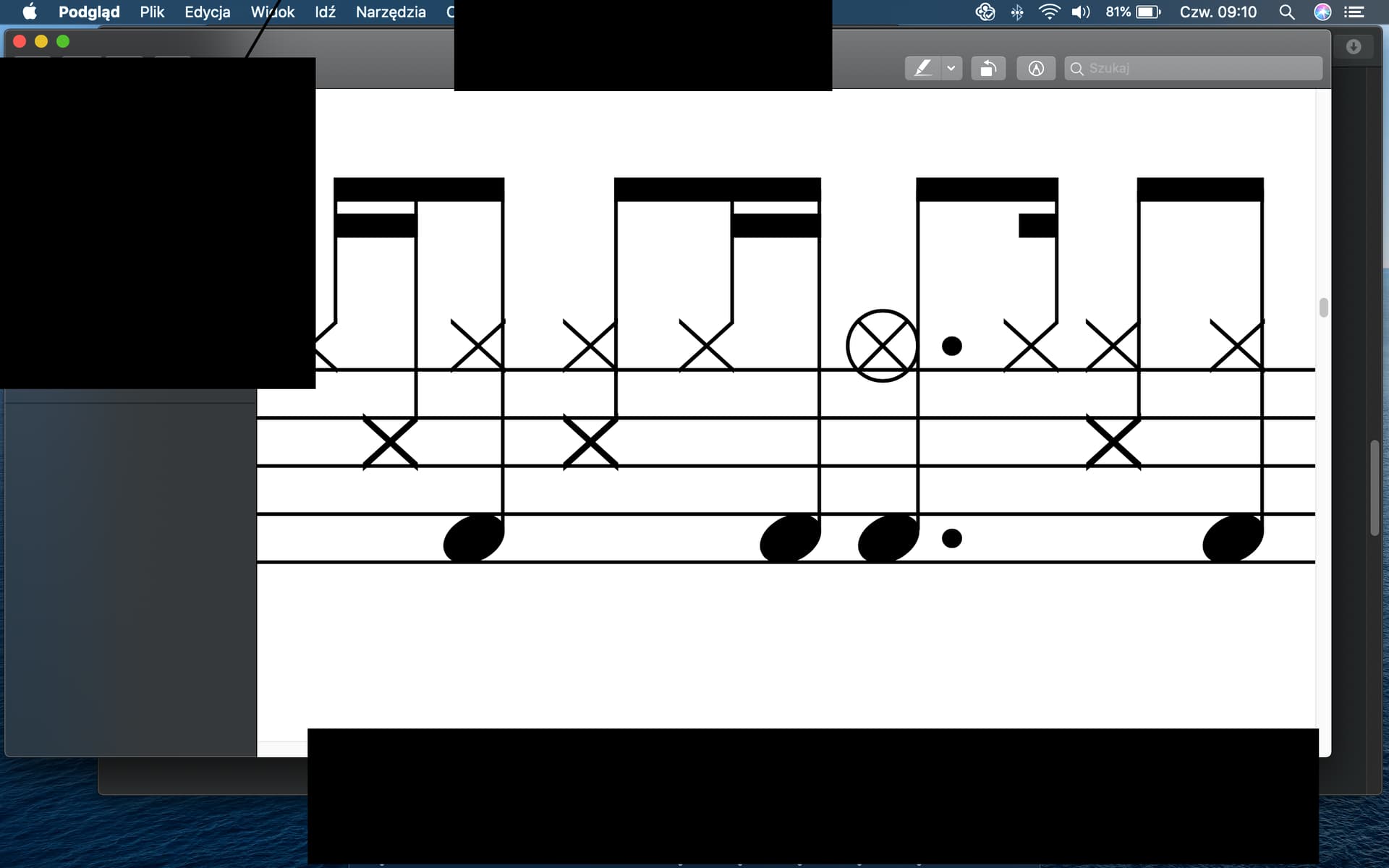Home>Production & Technology>Music Theory>Music Theory What Does Degree Mean


Music Theory
Music Theory What Does Degree Mean
Published: January 31, 2024
Learn what the term "degree" means in music theory and how it relates to understanding musical relationships. Discover key concepts in music theory with our comprehensive guide.
(Many of the links in this article redirect to a specific reviewed product. Your purchase of these products through affiliate links helps to generate commission for AudioLover.com, at no extra cost. Learn more)
Table of Contents
Introduction
Welcome to the intriguing world of music theory, where beautiful melodies and harmonies come to life. One fundamental concept that forms the basis of music theory is the notion of “degree.” In this article, we will delve into the meaning and significance of degree in music theory.
Degree refers to the position of a note within a musical scale. It provides a framework for understanding and analyzing the relationships between different notes and their roles in a composition. By studying degrees, musicians can gain a deeper understanding of how melodies and harmonies are constructed and how they relate to the overall key of a piece.
Whether you are a seasoned musician looking to expand your theoretical knowledge or a curious music enthusiast seeking a glimpse into the inner workings of music, understanding the concept of degree is essential.
Throughout this article, we will explore various aspects of degree in music theory. We will discuss its definition, its importance in music theory, and how it is applied in melodies, harmonies, and composition. By the end, you will have a solid foundation in understanding degree and its significance in the world of music.
Definition of Degree in Music Theory
In music theory, a degree refers to the position of a note within a musical scale. It provides a way to categorize and analyze the relationship between different notes in a composition. Degrees are typically represented by numbers, with the tonic note of the scale being designated as the first degree.
Each degree has a unique function within a musical piece. They determine the stability, tension, and resolution of the harmonies and melodies. By understanding the degrees, musicians can navigate the tonal landscape and create harmonically rich and captivating compositions.
A degree can also be described in terms of its distance from the tonic note. For example, in a major scale, the second degree would be a whole step above the tonic, while the third degree would be two whole steps above the tonic.
Furthermore, degree can refer to both the individual notes within a scale as well as the larger chords and harmonies that are built upon those notes. For instance, the first degree of a major scale corresponds to the tonic chord, which provides a sense of stability and grounding. On the other hand, the seventh degree of a major scale often leads to a sense of tension and anticipation, as it tends to resolve to the tonic note.
Understanding the different degrees and their functions is crucial for musicians when analyzing and interpreting music. It allows them to identify recurring patterns, modulations, and chord progressions, as well as providing a solid foundation for improvisation and composition.
Now that we have established the definition of degree in music theory, let us explore its importance and how it impacts the overall structure and sound of a piece of music.
Importance of Degree in Music Theory
The concept of degree holds immense importance in music theory and is essential for understanding the structure and tonality of a musical composition. Here are a few reasons why degree is crucial:
- Harmonic Analysis: By identifying the degrees within a piece of music, musicians can perform harmonic analysis, which involves dissecting the chords and their functions. This analysis helps in understanding the progression of chords, identifying chord patterns, and predicting the emotional impact of the music.
- Modulations and Key Changes: Degree plays a significant role in modulations and key changes within a composition. Modulation refers to the transition from one key to another. By recognizing the degrees of the original key and the new key, musicians can navigate through key changes smoothly and create compelling musical transformations.
- Melodic Development: Degrees are crucial for understanding melodic development within a composition. Musicians can create melodies by manipulating the degrees, exploring various intervals, and establishing a sense of tension and resolution. The repetition, variation, and development of degrees contribute to the overall structure and coherence of a melody.
- Chord Progressions: Degree forms the foundation of chord progressions. By understanding the degrees of the scale, musicians can construct and interpret chord progressions, which are essential for creating harmonic movement and conveying specific emotions within a piece of music.
- Composition and Arrangement: Degree aids in composing and arranging musical pieces. Musicians can utilize the knowledge of degrees to create harmonically pleasing progressions, layer melodies, and establish contrasts and resolutions. It provides a framework for making informed decisions about the arrangement and orchestration of musical elements.
By understanding the importance of degree in music theory, musicians can unlock a deeper appreciation for the intricacies of musical compositions and enhance their ability to analyze, interpret, and create music.
Now that we have highlighted the significance of degree, let us explore the concept in more detail and understand how it functions within the context of a musical composition.
Understanding the Concept of Degree
To fully grasp the concept of degree in music theory, it’s important to understand its relationship to the musical scale. A musical scale is a sequence of notes arranged in ascending or descending order, which serves as the foundation for melodies and harmonies.
The degrees of a scale are important because they determine the relationships between the individual notes. The first degree, also known as the tonic, sets the tonal center of the scale and serves as a point of resolution and stability. The other degrees in the scale have different functions, creating tension, leading to resolution, or providing a sense of contrast.
One common way to represent and refer to degrees is through the use of Roman numerals. For example, in the key of C major, the first degree is represented as I, the second degree as II, the third degree as III, and so on. This standardized notation allows musicians to communicate and analyze music more efficiently.
By understanding the concept of degree, musicians can identify and analyze chord progressions and modulations within a piece of music. For example, a common chord progression in the key of C major might be I-IV-V-I, which represents the chords based on the first, fourth, and fifth degrees of the scale. This progression creates a sense of resolution and completeness.
Understanding the concept of degree also helps in improvisation and composition. Musicians can use their knowledge of the degrees to create interesting and engaging melodies and harmonies. By manipulating the degrees, they can create tension and release, convey different emotions, and add complexity and depth to their musical creations.
It’s worth noting that different musical genres and styles may use degrees in unique ways. For example, in jazz music, musicians often utilize complex chord progressions that involve altered or extended degrees, adding rich harmonies and unique flavors to their improvisations. Similarly, in classical music, composers may incorporate modulations to different keys, showcasing the versatility and flexibility of degrees.
Overall, understanding the concept of degree in music theory is key to unlocking the depth and complexity of musical compositions. It allows musicians to analyze, interpret, and create music with a deeper understanding of how notes and chords interact within a scale.
Now that we have a solid understanding of degrees, let’s explore their relationship to the overall key of a musical composition.
Relationship between Degree and Key
In music theory, the relationship between degree and key is fundamental to understanding the tonal center and overall structure of a musical composition. A key refers to the set of pitches or notes that a piece of music is based on, while the degree represents the position of a note within that key’s scale.
Each key has its own unique set of degrees. For example, in the key of C major, the degrees would be represented by the notes within the C major scale: C as the first degree (tonic), D as the second degree, E as the third degree, and so on. The degrees within a key determine the harmonic and melodic characteristics of the music.
The relationship between degree and key becomes apparent when analyzing chord progressions. In a major key, certain degrees tend to have specific chord qualities associated with them. For example, the tonic chord (I) is typically major, the subdominant chord (IV) is also major, and the dominant chord (V) is major as well. These chords based on specific degrees play a crucial role in establishing the tonal center and overall harmonic progression of a piece.
Additionally, the relationship between degree and key also affects the emotional impact of a piece. Different degrees within a key have varying degrees of tension and resolution. For instance, the seventh degree (leading tone) has a strong tendency to resolve to the first degree (tonic) because of the half-step distance between them. This resolution creates a satisfying sense of completion and stability.
Modulations, or key changes, also rely heavily on the relationship between degree and key. When transitioning from one key to another, musicians must consider the compatibility of degrees between the two keys to create a smooth and coherent modulation. By understanding the degrees and their relationships within each key, musicians can navigate through key changes effectively and create musical tension and release.
Ultimately, the relationship between degree and key is essential for understanding the tonality, harmonic progression, and emotional impact of a musical composition. By analyzing the degrees within a key, musicians can identify recurring patterns, chord progressions, and modulations, allowing for a deeper understanding and interpretation of the music.
Now that we have explored the relationship between degree and key, let’s delve into how degree manifests in melodies and harmonies.
Degree in Melodies and Harmonies
Degree plays a crucial role in both melodies and harmonies in music. It helps shape the melodic lines and adds depth to the harmonic structure of a composition. Let’s examine how degree manifests in both melodies and harmonies:
Melodies: In melodies, the choice and arrangement of degrees determine the flow, contour, and character of the musical line. Different degrees create different melodic intervals, which contribute to the overall mood and emotional impact of the melody. For example, ascending from the first to the second degree in a major scale creates a whole step interval, imparting a sense of upward movement and joyfulness. On the other hand, descending from the fourth to the third degree creates a half-step interval, often evoking a more introspective or melancholic tone. By understanding how degrees influence melodic intervals, musicians can deliberately craft melodies that convey specific emotions and tell expressive musical stories.
Harmonies: In harmonies, degrees determine which chords are built upon each degree within a key. Different degrees have different chord qualities associated with them. For example, the tonic degree (first degree) typically forms the foundation for the tonic chord, which provides a sense of stability and acts as the home base. The dominant degree (fifth degree) is often associated with the dominant chord, which creates tension and seeks resolution back to the tonic. By understanding the characteristics of each degree and their associated chords, musicians can construct harmonies that support and enhance the melodic lines, creating rich and compelling musical textures.
Furthermore, the interaction between degrees in melodies and harmonies is essential for creating cohesive and interesting musical compositions. The interplay of different degrees in various voices or instruments can generate harmonically pleasing progressions and harmonies that shape the overall musical landscape. By using degrees strategically, musicians can create tension and release, explore modulations, and develop melodic and harmonic themes throughout a composition.
Understanding the role of degree in both melodies and harmonies allows musicians to compose and arrange music with intention and purpose. By crafting melodies that utilize different degrees and harmonies that support those melodies, musicians can create captivating and emotionally engaging musical experiences.
Now that we have explored the role of degree in melodies and harmonies, let’s explore its application in composition and arrangement.
Applying Degree in Composition and Arrangement
Applying the concept of degree in composition and arrangement allows musicians to create cohesive and captivating musical pieces. By understanding the relationships between degrees, composers can effectively structure their compositions and arrange musical elements to achieve their desired artistic expression. Here are some ways in which degrees are applied in composition and arrangement:
Harmonic Progression: Using degrees, composers can develop compelling chord progressions that create tension and resolution. By strategically selecting chords based on specific degrees, composers can guide the listener through a musical journey. For example, starting with the tonic chord (I), moving to the subdominant chord (IV), and resolving to the dominant chord (V) creates a familiar and satisfying harmonic progression in many musical genres.
Modulation and Key Changes: Degrees are instrumental in modulating to different keys. Composers can incorporate modulations to introduce new musical colors and evoke different emotions. By understanding the relationships between degrees in the original and new keys, composers can create smooth transitions and maintain coherence in the composition.
Melodic Development: Degree manipulation is essential in melodic development. Composers can use degrees to create melodic patterns, motifs, and variations. By altering the degrees within a melody, composers can add complexity, create tension, and provide resolution, enhancing the overall emotional impact of the composition.
Contrast and Variation: When arranging a piece, musicians can utilize degrees to create contrast and variation. By introducing different melodies or harmonies based on different degrees, musicians can add depth and interest to the arrangement. This enables the composition to evolve and captivate listeners’ attention.
Orchestration and Instrumentation: Degrees also play a role in orchestrating and selecting the appropriate instruments for a composition. Different instruments have unique tonal characteristics and ranges that can enhance the expression of specific degrees within a composition. Composers can use this knowledge to choose instruments that will highlight certain degrees and create the desired sonic qualities.
Ultimately, applying the concept of degree in composition and arrangement allows musicians to create music that is structurally sound, harmonically rich, and emotionally evocative. By understanding and manipulating degrees, musicians can craft compositions that engage listeners on a deep and meaningful level.
Now that we have explored the application of degree in composition and arrangement, let’s conclude our journey into the world of music theory and degree.
Conclusion
Music theory and the concept of degree are pillars of understanding the inner workings of music. Through the exploration of degrees, musicians gain insights into the relationships between notes, the structure of scales and chords, and the emotional impact of melodies and harmonies. By studying and applying degrees in composition and arrangement, musicians can create cohesive and engaging musical pieces that resonate with listeners.
Understanding the definition of degree in music theory provides a foundation for harmonic analysis, modulation, and melodic development. It allows musicians to navigate through different keys, anticipate chord progressions, and create tension and resolution. The relationship between degree and key serves as a guide to identifying tonal centers and analyzing harmonic progressions.
Applying degrees in composition and arrangement allows musicians to craft harmonically pleasing progressions, develop melodic themes, and create contrast and variation within a musical piece. By manipulating degrees, musicians can evoke specific emotions, modulate between different keys, and orchestrate instruments to enhance the expressive qualities of the composition.
As a musician, delving into the world of degree in music theory opens up new possibilities for exploration and creativity. By honing their understanding of degrees and their application, musicians can further their artistic expression, communicate more effectively through music, and connect with audiences on a profound level.
In conclusion, degree in music theory is a foundational concept that holds immense importance. It allows musicians to navigate through the complexities of musical composition, create harmonically rich melodies and harmonies, and evoke emotions through their artistry. By embracing the concept of degree, musicians can enhance their understanding of music theory and elevate their musical craftsmanship.











